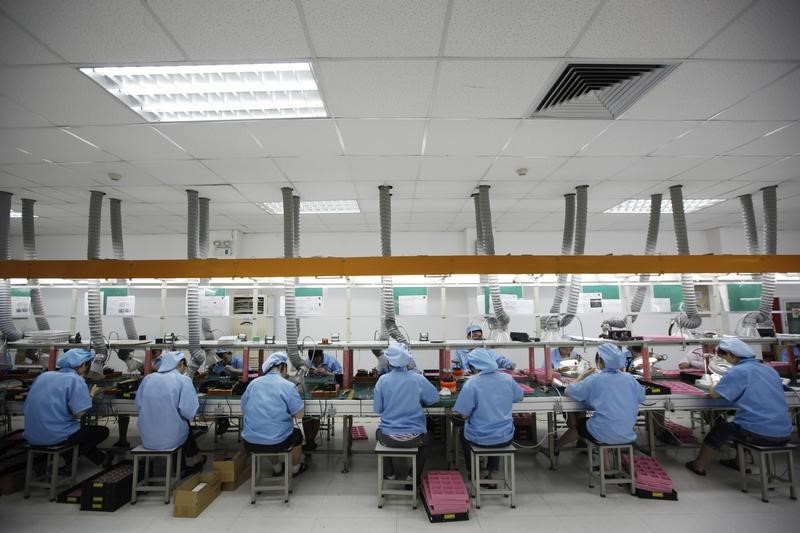BEIJING (Reuters) - China's factory activity contracted for the fourth straight month in June but at a slower pace than in May, a private survey showed on Wednesday, offering signs that the economy may be slowly levelling out but is still in need of more support measures.
The HSBC/Markit Flash China Manufacturing Purchasing Managers' Index (PMI) edged up to 49.4 from 49.2 in May, but it was below a preliminary reading of 49.6, and remained under the 50 mark which separates contraction from expansion.
After three months of falls, new orders returned to positive territory, but only just with a reading of 50.3, while new export orders also picked up from May.
But factories were forced to discount prices for their products at a faster rate as demand remained sluggish, and firms cut staff levels at the sharpest pace since February 2009, a trend sure to alarm leaders in Beijing.
"The final reading of the HSBC China Manufacturing PMI pointed to a further decline in the health of the manufacturing sector in June," said Annabel Fiddes, an economist at Markit.
"On the upside, there were some signs of improvement in total new orders and new export business, suggesting demand both at home and abroad is reviving. However, it is likely that more stimulus measures will be required to ensure that the sector can regain growth momentum and to encourage job creation."
Earlier on Wednesday, China's official factory data showed activity in its manufacturing sector expanded slightly in June though not as much as analysts had expected, while growth in the services sector quickened.
The official data focuses on larger, state-owned firms, while the private survey tends to concentrate on small- and mid-sized companies which are facing more financing strains.
China's central bank lowered lending rates last weekend for the fourth time since November and trimmed the amount of cash that some banks must hold as reserves, stepping up efforts to support an economy that is headed for its poorest performance in a quarter century.
Saturday's combined easing highlights Beijing's concerns that money isn't flowing to some of the most-needy sectors in the economy and that stubbornly high borrowing costs could fuel bankruptcies and more job losses.
The last time the central bank simultaneously cut interest rates and reserve requirements was at the height of the global financial crisis in late 2008.
The latest move could also be aimed at comforting investors following a more than 20 percent plunge in the country's stock markets over the last two weeks, some analysts said.
SHAKY SIGNALS
Economic signals in China have shown hints at turning in recent months as earlier policy easing efforts finally start to bear fruit, though rate cuts have not paid dividends as quickly as in past downturns.
Property prices and sales have shown signs of improving, at least in big cities, but investment remains weak with high local government debt and bureaucratic delays thwarting Beijing's efforts to get big infrastructure projects off the ground.
The sharp plunge in Chinese stocks could pose fresh risks for the economy and put new strains on the financial system if heavy selling persists.
"A 'best case' scenario is that a continued equity collapse would knock a percentage point off China's GDP growth simply by cooling currently overheated financial sector activity," Capital Economics said in a note this week.
"But the rapid expansion of leverage over the past year means that a sharper economic slowdown is possible."
Annual economic growth slowed to a six-year-low of 7 percent in the first quarter, and recent data showed a further loss of momentum in the second quarter.
Weighed down by the property downturn, factory overcapacity and high financing costs, China's economic growth is expected to slow to a quarter-century low of around 7 percent this year from 7.4 percent in 2014, even with additional stimulus measures.
